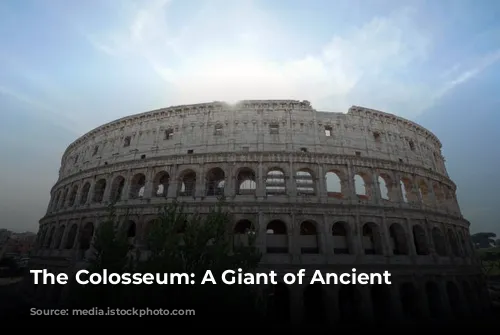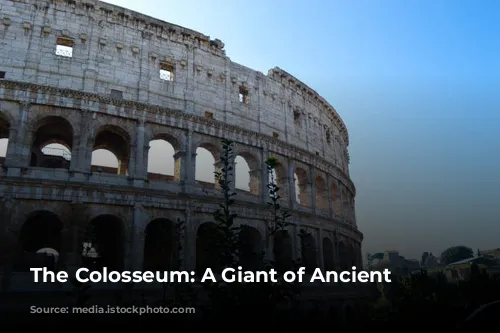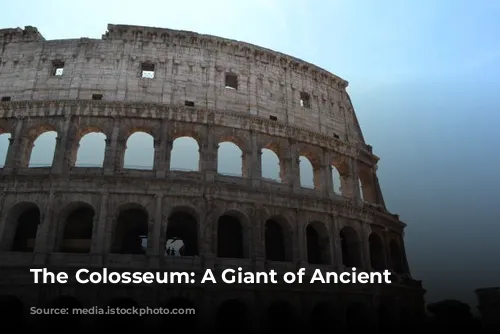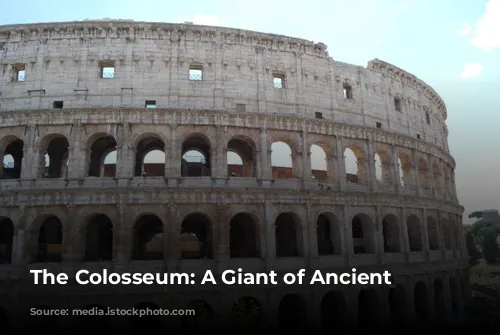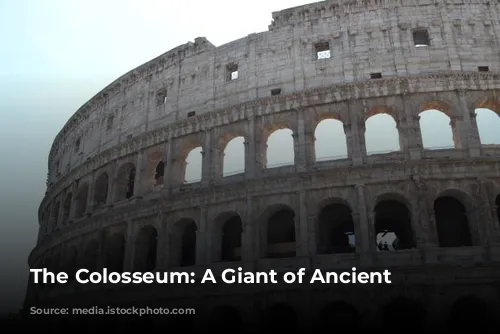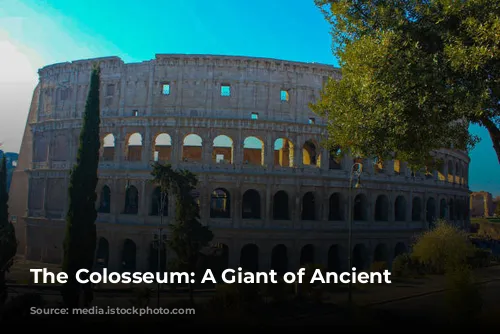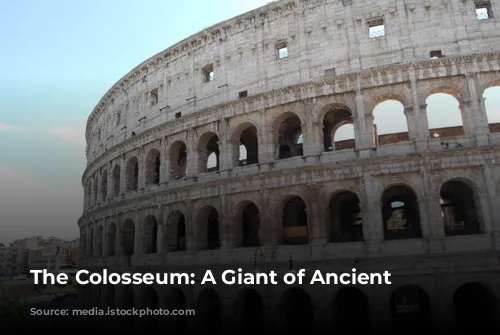The Colosseum, or Flavian Amphitheatre, is a symbol of Rome’s grandeur and a testament to the power of the Roman Empire. It is the largest amphitheatre ever built by the Romans and one of the most famous monuments in the world. Construction was started by Emperor Vespasian of the Flavia family and completed by his son, Titus, who opened the Colosseum in 80 A.D. with a spectacular 100-day celebration. The opening featured a dazzling display of gladiator fights, animal hunts, and even naumachiae, simulated naval battles that filled the arena with water.
The Colosseum’s Name and Construction
The Colosseum gets its name from a gigantic statue of Emperor Nero known as the “Colossus,” which once stood near the amphitheatre. The statue was 35 meters tall, but it has been completely destroyed. The name “Colosseum” first appears in a prophecy by the medieval monk Venerable Beda, who believed the fate of Rome was intertwined with the fate of the Colosseum: “Rome will exist as long as the Colosseum does; when the Colosseum falls so will Rome; when Rome falls so will the world”.
The Colosseum is an imposing structure built with travertine stone and marble. Its elliptical shape allowed for a greater number of spectators. The building had four floors, with the first three featuring 80 arches each. The second and third floors were decorated with large statues. Amazingly, the Colosseum was completed in less than 10 years, a testament to the Romans’ mastery of construction techniques, especially the arch. This architectural element allowed for the efficient distribution of weight, a key factor in constructing such a massive building. Think of the Roman aqueducts, which also heavily relied on the use of arches.
The Colosseum: A Quarry for Centuries
What we see today is only a skeleton of the once magnificent arena. Over time, three-fifths of the outer brick wall has crumbled. In the Middle Ages, the Colosseum fell into disuse and was used as a quarry by Popes to obtain marble, lead, and iron. These materials were used to build buildings such as Barberini Palace, Piazza Venezia, and even St. Peter’s Basilica. The holes still visible in the columns are reminders of this period, as they were used to extract lead and iron used by the Romans in their construction techniques.
The Colosseum: Seating, Shade, and the Arena
The Colosseum could accommodate up to 70,000 spectators. The seating tiers were designed for optimal viewing, with each level offering a clear view of the arena. Entry was free for Roman citizens, but seating was assigned based on social status. The upper levels were reserved for commoners, while senators, vestals, priests, and the emperor occupied the front rows. Just like modern sports stadiums, the Colosseum had a sophisticated system for protecting spectators from the sun. The “Velarium,” a huge linen tarpaulin, was hung by a system of ropes, winches, and wooden poles. A team of 100 sailors from the Imperial fleet, working in unison to the beat of a drum, managed this massive structure.
The Colosseum’s arena was the heart of the spectacle. Today, the arena floor is gone, leaving behind cellars that once housed equipment used for the shows. Below ground, lifts and hoists, along with their counterweights, enabled the sudden appearance of animals and gladiators through trapdoors, creating a dramatic “wow” factor for the audience. The Colosseum’s underground system also allowed for the quick and efficient installation of stage backdrops for the various events. These shows not only entertained but also served as a way for the emperor to connect with his people, providing a shared experience and a welcome distraction from political issues.
The Colosseum: A Center for Spectacle
The Colosseum hosted a diverse array of spectacles, each with its own schedule. The morning featured “Venationes,” which involved fights between exotic animals or between men and animals. Some of these encounters, often used as a form of public execution, pitted criminals against ferocious beasts. The “Silvae” was a spectacular display where scenery was created to simulate a forest, complete with animals, though not always meant to be killed. Less violent and unique events also took place, such as the display of an elephant that could write words in the sand with its trunk. It is a myth that the Colosseum was used for the systematic killing of Christians.
The Colosseum: The Gladiators and the Audience
Gladiator fights were the most popular event in the Colosseum. After a midday break, during which the arena floor was cleaned and sprinkled with sand, the gladiators would make their grand entrance, accompanied by the roar of the crowd, trumpets, and drums. The gladiators came from the Ludus Magnus, the Gladiators’ barracks, and were greeted like heroes, much like today’s sports champions. After a lap around the arena, they would salute the emperor with the famous words “Ave Cesare morituri te salutant” (Hail Caesar, those who are about to die salute you).
Gladiators were not always forced into combat. Often, prisoners of war were given the choice of slavery or fighting in the arena for a limited time, after which they could gain their freedom. Others were simply poor people seeking fame and fortune. The profession offered high pay and widespread popularity, especially among women, who were known to pay large sums of money to spend time with these gladiators.
Gladiators were divided into twelve distinct types, each armed with different weapons and armor, such as the “Retiarius,” who used a net, trident, and knife, or those who fought with a shield and sickle. The fights were carefully choreographed for dramatic effect. If a gladiator was wounded, he could plead for mercy by raising an arm. The fate of the defeated gladiator rested in the hands of the emperor, who would either grant mercy or order his execution by a thumbs-up or thumbs-down gesture. Victorious gladiators received golden palm leaves and large amounts of money.
The Colosseum: A Spectacle of Blood and Cruelty
Roman audiences had a taste for the brutal and violent, a sentiment comparable to the modern-day fascination with “splatter” films. But the reality of the Colosseum was even more intense, with the stench of blood, burnt flesh, and wild animals overwhelming the air, even when attempts were made to mask it with incense and perfume.
The Colosseum: A Symbol of History
The Colosseum fell into disuse in the 6th century with the decline of the Roman Empire. It became a refuge for hermits, hospitals, and even a cemetery. From the Middle Ages onward, it was recognized as a marvel of Roman architecture and a major tourist attraction. Threatened with demolition in the 16th century, Pope Benedict XIV declared it a sacred monument dedicated to the Passion of Christ, marking it with a cross as a symbol of the suffering of Christian martyrs. This cross remains today and marks the start of the Stations of the Cross procession on Good Friday.
The Colosseum was saved from further destruction and destruction by the Popes who oversaw its restoration. For tourists today, the Colosseum is more than just a monument; it is a portal to the past, a “ghost of old Rome” as Charles Dickens described it. It stands as a reminder of the Roman Empire’s power and its fascination with spectacle, violence, and the fleeting nature of glory.
